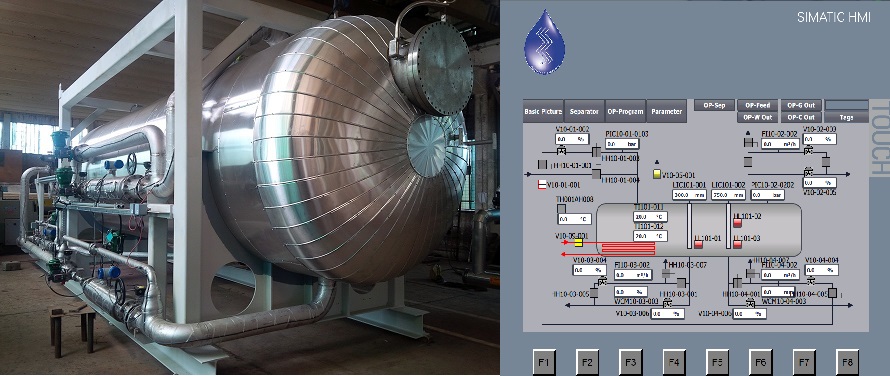
Separation of Oil/Associated Water and Gas
3 phase separators have the important role to separate crude oil, associated water and the present gas components from each other after the wellhead. When carbon dioxide is present in the gasphase, a foaming tendency makes the separation process more difficult.
Ensepatec utilizes 2 forces to separate the fluids.
Enhanced gravity forces
This force helps to separate fluids with larger density differences. Enhanced gravity forces are suitable to separate fluids with higher density differences.
Cyclonic forces
When the density difference between the oil and water phase is small and the API value is low, cyclonic forces may help to pre-separate the mixture at the inlet by applying a 3-phase cyclones. For such cases of fluid-properties, gravity forces are far too small to separate the fluids efficiently. Cyclonic forces are suitable to move a stable suspension of oil-droplets in water into a larger agglomerates of oil. 3-phase cyclones enable to built the separators smaller in comparison to the application of enhanced gravity forces.

Illustration: Flow pattern inside a 3-phase cyclone
Ensepatec’s 3-phase separators focus on separation efficiency
- Minimum oil content in the water outlet
- Minimum water content in the oil outlet
- Gas phase is cleaned from free liquid

Illustration: 3-phase production separator skid with instrumentation and controls
DETAILED INFORMATION
For more detailed technical information, please see technical brochure EST-TB.01, pages 8, 9 in our download area.